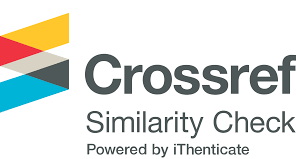Tối ưu quá trình học cây quyết định cho bài toán phân lớp theo cách tiếp cận khoảng mờ lớn nhất
Abstract
Hiện nay, khai phá dữ liệu rõ không thể giải quyết tất cả các yêu cầu đặt ra và bài toán phân lớp cây quyết định mờ tất yếu đóng góp một vai trò quan trọng của bài toán khai phá dữ liệu mờ. Tuy vậy, việc học cây quyết định dựa vào định lượng ngữ nghĩa theo điểm vẫn còn một số hạn chế như vẫn xuất hiện nhiều sai số trong quá trình xử lý, cây kết quả thu được không thật sự linh hoạt. Bằng cách thức đối sánh theo khoảng mờ, cây thu được đã giảm thiểu sai số và linh hoạt trong dự đoán tuy nhiên số nút trên cây tăng nhanh nên không đơn giản với người dùng và mất thời gian duyệt cây khi dự đoán. Trong bài báo này, chúng tôi đề xuất khái niệm khoảng mờ lớn nhất để xây dựng phương pháp học quy nạp cây quyết định mờ HAC4.5*, nhằm thu được cây quyết định mờ đạt được tối thiểu về số nút trên cây nhưng có khả năng dự đoán cao.References
A. Bikas, E. Voumvoulakis, and N. Hatziargyriou, “Neurofuzzy decision trees for dynamic security control of power systems,” in 15th International Conference on Intelligent System Applications to Power Systems (ISAP’09). IEEE, 2009, pp. 1–6.
G. G. Anuradha, “Fuzzy decision tree construction in crisp scenario through fuzzified trapezoidal membership function,” Internetworking Indonesia, vol. 7, no. 2, pp. 21–28, 2015.
B. Chandra and P. P. Varghese, “Fuzzy SLIQ decision tree algorithm,” IEEE Transactions on Systems, Man, and Cybernetics, Part B (Cybernetics), vol. 38, no. 5, pp. 1294–1301, 2008.
H. Ishibuchi and T. Nakashima, “Effect of rule weights in fuzzy rule-based classification systems,” IEEE Transactions on Fuzzy Systems, vol. 9, no. 4, pp. 506–515, 2001.
K. K. R. C and V. Babu, “A survey on issues of decision tree and non-decision tree algorithms,” International Journal of Artificial Intelligence and Applications for Smart Devices, vol. 4, no. 1, pp. 9–32, 2016.
S. Moustakidis, G. Mallinis, N. Koutsias, J. B. Theocharis, and V. Petridis, “SVM-based fuzzy decision trees for classification of high spatial resolution remote sensing images,” IEEE Transactions on Geoscience and Remote Sensing, vol. 50, no. 1, pp. 149–169, 2012.
M. Mehta, R. Agrawal, and J. Rissanen, “SLIQ: A fast scalable classifier for data mining,” Advances in Database Technology-EDBT’96, pp. 18–32, 1996.
J. Shafer, R. Agrawal, and M. Mehta, “SPRINT: A Fast Scalable Classifier for Data Mining,” IBM Almaden Reseach Center, 1996.
P. Fatima, D. Parveen, and M. Sathik, “Fuzzy decision tree based effective imine indexing,” International Journal of Computer Technology and Electronics Engineering, vol. 1, 2011.
J. R. Quinlan, “Simplifying decision trees,” International Journal of Man-Machine Studies, vol. 27, no. 3, pp. 221–234, 1987.
R. H. Tajiri, E. Z. Marques, B. B. Zarpelão, and L. de Souza Mendes, “A new approach for fuzzy classification in relational databases,” in International Conference on Database and Expert Systems Applications. Springer, 2011, pp. 511–518.
S. Ruggieri, “Efficient C4.5,” 2000.
Z. Qin and Y. Tang, “Linguistic decision trees for classification,” in Uncertainty Modeling for Data Mining. Springer, 2014, pp. 77–119.
J. Zhang and V. Honavar, “Learning decision tree classifiers from attribute value taxonomies and partially specified data,” in Proceedings of the International Conference on Machine Learning, Washington DC, 2003.
M. Zeinalkhani and M. Eftekhari, “Comparing different stopping criteria for fuzzy decision tree induction through IDFID3,” Iranian Journal of Fuzzy Systems, vol. 11, no. 1, pp. 27–48, 2014.
N. C. Ho and N. Van Long, “Fuzziness measure on complete hedge algebras and quantifying semantics of terms in linear hedge algebras,” Fuzzy Sets and Systems, vol. 158, no. 4, pp. 452–471, 2007.
N. C. Ho and H. V. Nam, “An algebraic approach to linguistic hedges in Zadeh’s fuzzy logic,” Fuzzy Sets and Systems, vol. 129, no. 2, pp. 229–254, 2002.
N. C. Ho and W. Wechler, “Hedge algebras: an algebraic approach to structure of sets of linguistic truth values,” Fuzzy Sets and Systems, vol. 35, no. 3, pp. 281–293, 1990.
N. C. Ho and W. Wechler, “Extended hedge algebras and their application to fuzzy logic,” Fuzzy Sets and Systems, vol. 52, no. 3, pp. 259–281, 1992.
L. V. T. Lân, N. M. Hân, and N. C. Hào, “An algorithm to building a fuzzy decision tree for data classification problem based on the fuzziness intervals matching,” Journal of Computer Science and Cybernetics, vol. 32, no. 4, pp. 367–380, 2017.


